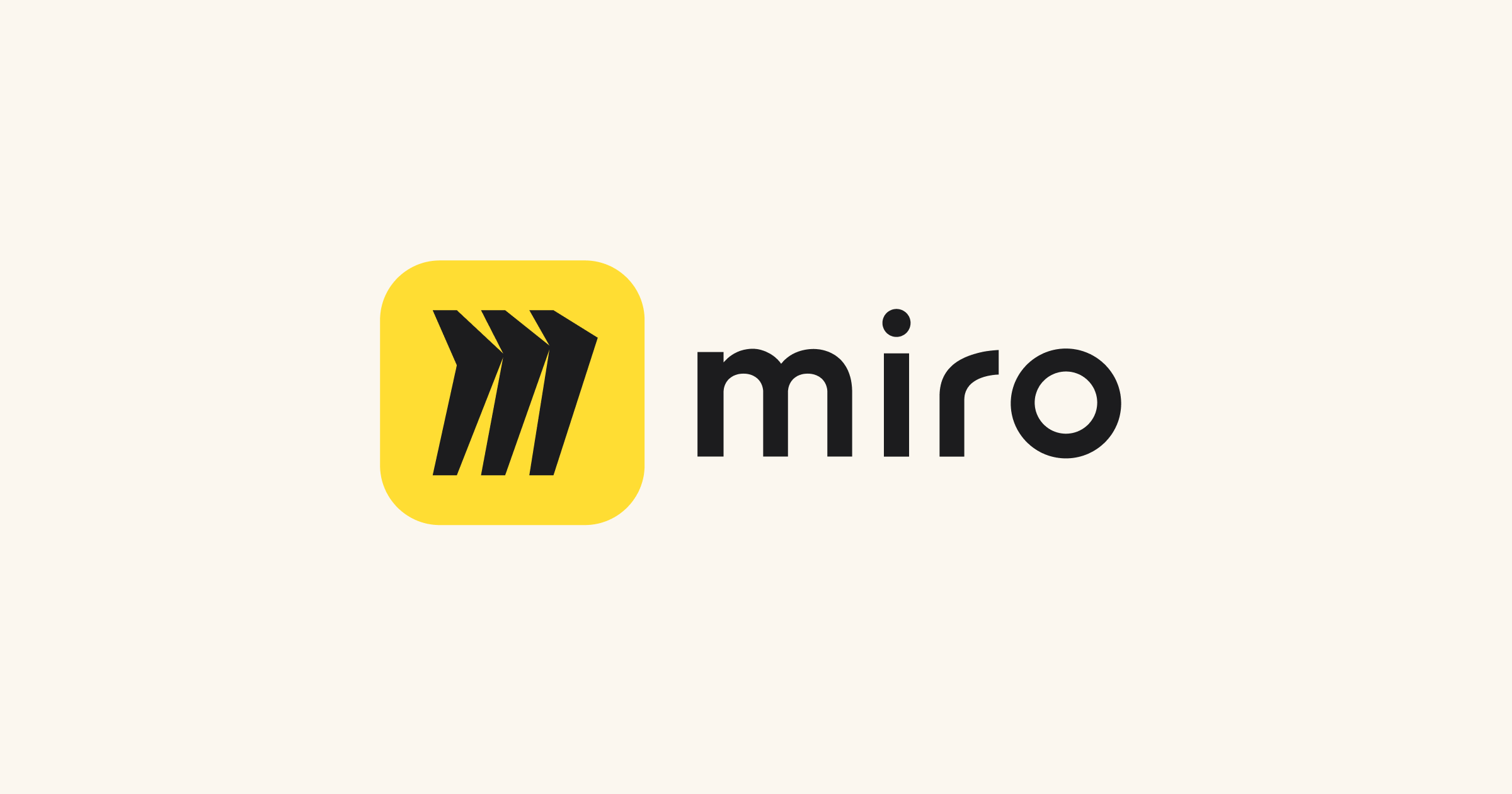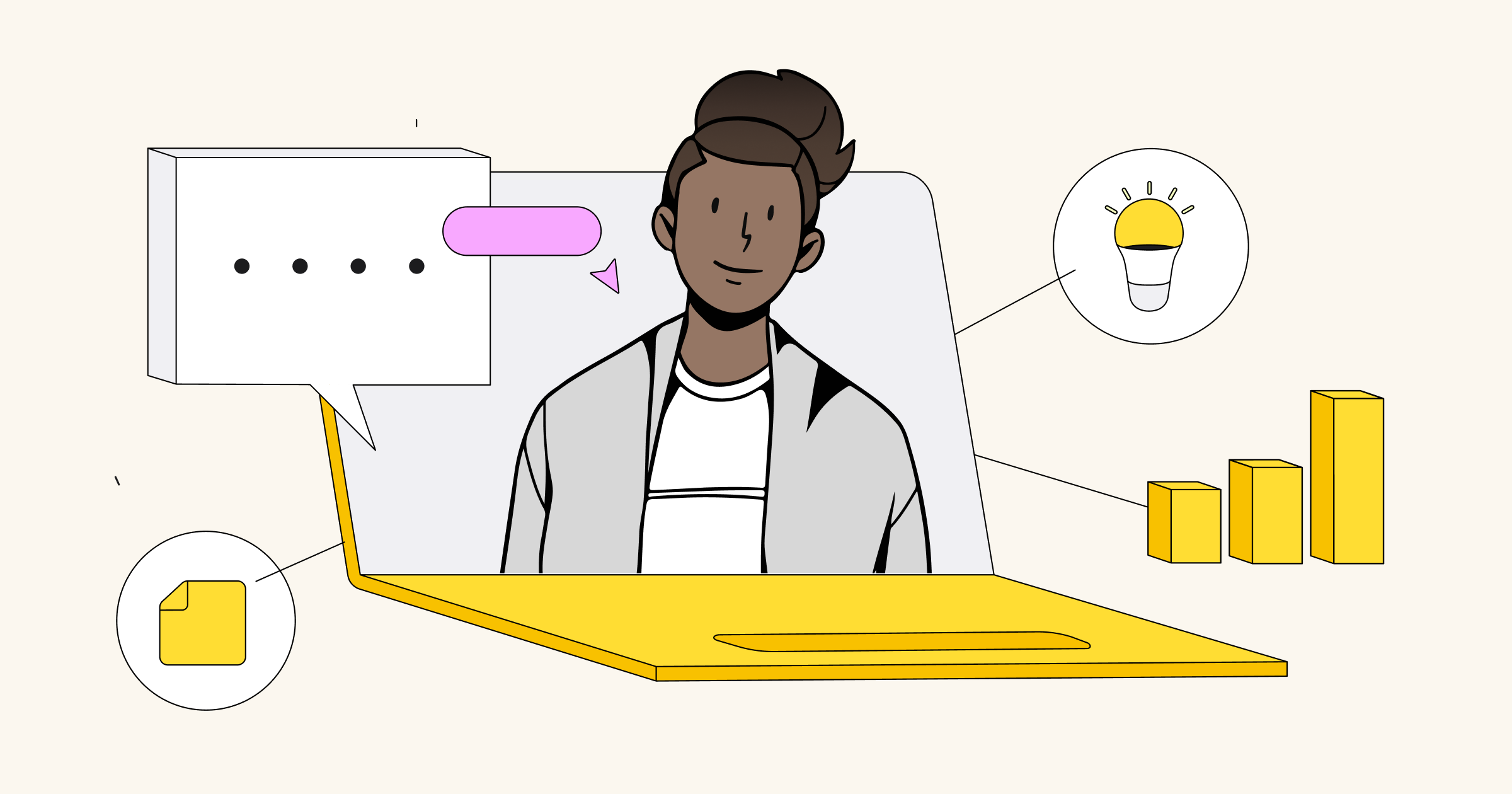When I became CEO of Biteable, I knew it’d be a challenge to lead an internationally distributed team. Biteable is the world’s leading video maker and in my first month with them, I flew over 20 hours across the world to meet investors and co-founders.
But that journey was nothing compared to what was in store next: COVID-19 was a curveball that no one expected. Suddenly, our in-person leadership offsite – a crucial part of my onboarding – had to be fully remote. Here’s how we adjusted and tackled mission-critical leadership topics, and why we now want to make remote offsites a quarterly company ritual.
Planning the offsite
As a “remote first” company, Biteable is no stranger to working from different locations. We have employees across the globe and two small office hubs in Hobart and Melbourne. While I was looking forward to our week-long offsite in Australia to soak up as much knowledge as possible, I was already aware that some key stakeholders wouldn’t be able to make it.
Our first step was aligning on what needed to be covered. We chose three big topic areas:
1. Mission, vision, values
As a leader, this is where I tend to drop anchor and build from. Our plan was to do some prep work and then use a couple half-day sessions to align on these three areas, combining what the company had in place with input from various internal stakeholders.
2. Long-term customer & product strategy
We want to paint an exciting vision for our team and build a framework to guide us going forward. This was planned to be a day and a half of discussions, some of which would include our investors who would also be in town for a board meeting.
3. Culture and people
Biteable has grown a lot in the past couple of years, spreading its wings across the globe with new customers and team members. After hiring me, the new CEO, the final pillar of the leadership offsite week was discussing how we could preserve our great culture, while improving and enhancing the employee experience in other areas.
We built out a calendar of sessions and started assigning ownership and prep work to different team members. As CEO, I needed to align our leadership group on new concepts that required lots of stakeholder input, so we could create effective discussions with actionable outcomes. Because some stakeholders weren’t going to be at the offsite, we needed a way to brainstorm asynchronously, with online tools that could help us collaborate.
Read the ultimate guide to remote work
Adjusting to fully remote
In mid-February, we set our dates and booked flights. By late February, it was clear we were not doing an offsite in Australia. Less than three weeks later we had closed our co-working facilities and our team had switched to working completely remotely. And we decided to pivot our week-long offsite to a series of virtual sessions spread over two weeks.
To accomplish our goals for the offsite, we realized we would need to do two things:
- Break up the sessions to be shorter. Staring at screens is very different from interacting on a whiteboard in a conference room, so we wanted to make sure people’s attention wouldn’t wander. Having shorter sessions also helped us schedule around timezones, so we weren’t having people flip their lives upside down to attend the sessions.
- Do more prep and alignment ahead of time. We no longer had the luxury of all-day sessions to present and discuss, so we had to find a way to get people up to speed on concepts ahead of time. We planned to start our sessions with data so that we could discuss, debate, and then leave with an action list.
Getting started with remote collaboration
As an internationally distributed company, we live on Slack, Notion, Hangouts, and Zoom. But for our offsite, I also needed something that could inspire brainstorming and iteration. An online whiteboard was exactly what I needed. I was familiar with Miro and had recently listened to a great podcast with the Miro founder Andrey Khusid on Inside Intercom. It was perfect timing to really kick the tires on this product.
Business model alignment
I started by thinking about how to align everyone on the purpose of each exercise. I created boards in Miro for each major exercise. The first couple sessions were focused on getting alignment on our business model. We used the Lean Business Canvas template in Miro, something I’d read about in Return Path, a book by Matt Blumberg on his founder journey.
I then created some instructions for my leadership team, gave them each a sticky note color, and assigned them a 20-minute project to go in and add their own responses.
My next step was to review and aggregate the feedback to facilitate a group discussion.

The second exercise was documenting our mission, vision, and values. My job was to take ideas we had already documented, and push and probe to make sure they were still true. After getting feedback from the team on what to adjust or incorporate, I’d codify the language for the foreseeable future.
I had the benefit of meeting with every employee over the 45 days leading up to our remote offsite prep, so I was hearing firsthand from our team on what values were most important, what inspired them, where we were already great, and what areas we could improve. I did a similar exercise where I outlined instructions, provided explanations of what these statements sought to accomplish, and then asked my leadership team for their notes and comments.

After that, I pulled all their comments into SurveyMonkey so the group could rank inputs across different topics. I added those results to our Miro board and sent it out for a second round of comments now that we were getting further towards making some decisions. This set us up for a data-driven, actionable discussion during our remote offsite session.
Mapping the customer journey remotely
When it came to strategy, I wanted to get our leadership team aligned on how we viewed our customers’ workflow. And I wanted to think about this workflow across a few different important personas for us. I began by outlining a customer journey workflow I knew well.
After spending seven years at SurveyMonkey – and now over a decade running survey projects – I know the customer journey for a survey project like the back of my hand. I outlined it in Miro and asked one of my team members to outline the Biteable customer workflow from the perspective of a marketer.
The exercise I gave our team was to detail every single step of what a customer goes through from inspiration through analysis and presentation. Then, we backed up and bucketed steps in the user journey to create customer workflow stages.

We invited others to critique the flow and did light validation with customer interviews. This gave us valuable insights, and after sharing, ensured that we all entered the session on the same page.
For use during the session, I created two exercises: One was to pitch our group on where they felt we had the biggest opportunity, positioning it within the customer journey and including things like business opportunity and why we were uniquely suited to address it. Second, was to grade our product/market fit for each of our target personas along the workflow, so we could align on where we were strong and where we had gaps for our existing and target customers.
The results
All in all, our offsite was at least as productive as we had initially planned, since we were all in sync and able to collaborate from across the world. Here’s what we accomplished in the end:
- A clear definition of our mission, vision, and values, which were written in a succinct document to share with our entire organization.
- A customer journey map for each of our target customer personas, as well as a map of how we see ourselves today vs. how that may evolve long term along the same customer journey
- Our lean business canvas, which was shared as a one-pager to drive alignment across the organization.
A continued need for online collaboration
Over the past several weeks, the need for us to collaborate and get input quickly and asynchronously has accelerated. We’re seeing increased demand from customers across all sectors to communicate their messages to internal and external audiences. Video is an incredible way to tell a story, share a message and make it stick, or at least stand out from the hundreds of text-dense emails we’re all receiving. Miro has been absolutely critical in helping us move quickly, get ideas out on a whiteboard, and get feedback fast.
I definitely look forward to a time when it’s safe for our team to get together in person. But I’m grateful that now we’ve got a new tool in our toolbox: the virtual offsite. It’s something I expect we’ll do quarterly, instead of just once or twice a year, since we’re not bound by the need for physical presence.
While lots of uncertainty exists today, lots of clarity has come to Biteable. This is global collaboration at its finest. Miro isn’t a collaboration tool for our small teams, its an alignment tool for our entire organization.
Brent Chudoba, CEO at Biteable
Brent is CEO of Biteable, an intuitive video creation platform that delivers professional quality results. He has spent the last decade in executive roles at some of the best and most popular productivity software businesses on the Internet, including Calendly, Thrive Global, PicMonkey, and SurveyMonkey.



